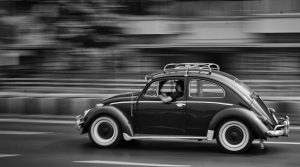8 Day(s) 7 Night(s)
Destination: Mumbai
The City of Dreams
The city of Bombay originally consisted of seven islands called Colaba, Mazagaon, Old Woman’s Island, Wadala, Mahim, Parel, and Matunga-Sion. This group of islands has been joined together by a series of reclamations and formed part of the kingdom of Ashoka, the famous Emperor of India. Bombay’s colonial legacy is the Gateway of India built to commemorate the Royal visit of George V and Queen Mary in 1911. The Taj Mahal hotel opposite the Gateway was built in 1903 by Jamashedji N. Tata, founder of a prestigious industrial house, to counter a ban on Indians entering the then-famous Watson’s hostelry. Sir Robert Grant (1779-1838) governed Bombay from 1835 to 1838 and was responsible for the construction of a number of roads between Bombay and the hinterland. In January 1899, the Brokers’ Hall was inaugurated by James M. Maclean, M.P. After the First World War the Bombay Stock Exchange (BSE) was housed in an old building near the Town Hall. In 1928, the present plot of land was acquired surrounded by Dalal Street, Bombay Samachar Marg, and Hammam Street. A building was constructed in 1930 and occupied in December of that year. On Saturday 16th of April, 1853 a 21-mile-long railway line, the first in India, between Bombay’s Victoria Terminus and Thana was opened. The latter half of the 19th century was also to see a feverish construction of buildings in Bombay, many of which such as the Victoria Terminus, the General Post Office, Municipal Corporation, the Prince of Wales Museum, Rajabai Tower and Bombay University, Elphinstone College and the Cawasji Jehangir Hall, the Crawford Market, the Old Secretariat (Old Customs House) and the Public Works Department (PWD) Building, still stands today as major landmarks. The Gateway of India was built to commemorate the visit of King George V and Queen Mary to the Darbar in Delhi in 1911. The historic session of the All India Congress Committee began on the 7th of August 1942. Its venue was the Gowalia Tank Maidan, where the congress was born in 1885. It was at this session that the “Quit India” call was given by Mahatma Gandhi and other Indian National Congress leaders. After independence, the Congress party led by Jawaharlal Nehru at the Center was swept to power in most of the Indian States, which were constituted on the basis of language spoken by the majority of its people. The Bombay State included the city as its seat of government. In 1960 the state of Bombay split into Maharashtra and Gujarat states again on a linguistic basis, the former retaining Bombay city as its capital.
As a centre of arts, culture, and creativity, the city is always buzzing with activity. There are numerous places to absorb the vibe that best represents Mumbai. From the beaches to caves, and cafes to play with a pinch of old history, you can have your pick. You can walk through Marine Drive, dine in Bandra, see the Gateway of India, and visit the Elephanta caves, all in a day and it would still not be enough. Things like shopping at Colaba Causeway, eating street food at Juhu Beach, exploring Kala Ghoda, and visiting the Haji Ali Dargah are all experiences worth having when in Mumbai. It is said to be the city of dreams where many come to fulfill theirs and the vibe is surely enticing for a traveler to explore its nooks and corners chancing upon such stories. The uniqueness of the city is better experienced than expressed. However, to show you a glimpse of what the city has to offer through the written word, here is a list of what you must explore when in Mumbai.
Places to see in Mumbai
Gateway of India

A landmark that has etched its way in people’s hearts as the city’s most iconic destination. One that speaks of history, culture, and stories that have thrived through time. Overlooking the Arabian Sea, it sits atop Apollo Bunker, right opposite the Taj Mahal Hotel in Mumbai. Designed by the renowned architect George Wittet to commemorate King George V and Queen Mary’s visit to Mumbai, it was constructed in the year 1924. The design not only compliments the view but adds every bit of historic value to the location. The foundation of the place was laid in 1911 as ‘Mumbai’s Taj Mahal’ and it was inaugurated 13 years later. A stunning blend of Indian, Arabic, and Western architecture, it is now a must-see destination and one cannot leave Mumbai without a picture in front of the Gateway of India. Before independence, the Gateway’s basalt arch served as the entry and exit point to India via waterways, as well as the departure point from which the last British ship left India for England. Now it also serves as a departure point for Elephanta Caves, so many combine the two as part of their itinerary. In the vicinity of the Gateway, there are other statues of Swami Vivekananda and Chhatrapati Shivaji. The view of the Gateway complex from the water, especially at night, is quite ethereal and lovely.
Elephanta Caves

Entitled a UNESCO World Heritage Site, the Elephanta Caves is a prime example of India’s rock-cut art and architecture. The caves are located 11 km from Mumbai on Gharapuri Island. You can enjoy the view of Mumbai’s skyline as you take the ferry to reach the island. The history of these caves dates back to the 5th to 7th centuries and they are said to be dedicated to Lord Shiva. The caves are an expression of art, with several important imageries carved here, including ‘Trimurti’ or three-headed Shiva, ‘Gangadhar,’ which is a manifestation of the river Ganga. More Stone sculptures depicting the Shaiva Hindu religion can be found in the Hindu caves. There are also a smaller group of caves said to be built by Buddhist monks. Overall the place is a unique trekking destination in addition to being a significant historical monument.
Juhu Beach
One of the city’s most popular beach destinations, it is known for its views, food joints, and overall enjoyable atmosphere. Many Indian celebrities reside in this area and therefore you may see many on the road grabbing a coffee or going for a walk. The beach is always more or less crowded as it has many activities and food stalls for the locals. But you must try and see the neighborhood’s vibe. As sunset approaches, you can see the locals bringing in their families or office folks leaving work to grab a snack at the street vendor. It is an ideal place to witness the city’s lifestyle and culture
Marine Drive
 This iconic landmark is easily recognized by the locals as it has been featured in many movies and is known to be the best hangout spot in the city. The 3.6 km long arch-shaped stretch runs along the South Mumbai coast from Nariman Point’s southern end to Chowpatty Beach. The beauty of the place is enhanced at night with its glittery lights and as seen from afar it looks like a Queen’s Necklace, as it is fondly known by the locals. A simple walk along the path during sunset ensures you soak in the vibe of the city. Surrounded by the Arabian Sea, it is also a hub of many activities throughout the day as many enjoy morning leisure walks or drive down post-dinner to have a chat by the sea. The place is always brimming with people from all walks of life enjoying the beauty of nature seamlessly merging with a busy life at the shore. Many also come here late at night to see the city shimmering at night and simply have a nice conversation enjoying the view. Marine Drive is arguably one of the most romantic sites in the city, with the sound of the waves, a glimpse of the Mumbai skyline, and a starry sky.
This iconic landmark is easily recognized by the locals as it has been featured in many movies and is known to be the best hangout spot in the city. The 3.6 km long arch-shaped stretch runs along the South Mumbai coast from Nariman Point’s southern end to Chowpatty Beach. The beauty of the place is enhanced at night with its glittery lights and as seen from afar it looks like a Queen’s Necklace, as it is fondly known by the locals. A simple walk along the path during sunset ensures you soak in the vibe of the city. Surrounded by the Arabian Sea, it is also a hub of many activities throughout the day as many enjoy morning leisure walks or drive down post-dinner to have a chat by the sea. The place is always brimming with people from all walks of life enjoying the beauty of nature seamlessly merging with a busy life at the shore. Many also come here late at night to see the city shimmering at night and simply have a nice conversation enjoying the view. Marine Drive is arguably one of the most romantic sites in the city, with the sound of the waves, a glimpse of the Mumbai skyline, and a starry sky.
Chhatrapati Shivaji Maharaj Vastu Sanghralaya /
The Prince of Wales Museum
The Prince of Wales Museum is a magnificent structure in Mumbai that is considered one of the city’s heritage structures. The Prince of Wales lay the foundation stone for this structure on November 11, 1905, and it opened as a museum on January 10, 1922. The museum’s front is a sight to behold, and it rests in the middle of a lush green garden. The museum’s architecture is a combination of Indian, Mughal, and British engineering traditions, featuring magnificent stone and latticework. Inside, the museum houses about 50,000 of the most precious objects from India’s rich and diverse past. However, it is now called Chhatrapati Shivaji Maharaj Vastu Sanghralaya
Things to do in Mumbai
Film City Mumbai
Located in the Aarey colony, the Film City spans 520 acres comprising various indoor and outdoor sets. The area is so large that up to 1000 film sets can be built at the same time. It has been the setting for several Bollywood films over the years. Almost 900 films and numerous television episodes have been filmed here. Film City has evolved into one of the top film studios in the world, with all of the necessary conveniences and world-class facilities. It’s not only a terrific location for filming, but it’s also full of lush foliage and refreshing stretches. Similar to the California Film City representing Hollywood, this Film City is now known as the hub of Bollywood production. With India making a global mark on the film scene, many want to witness the behind the scene efforts. Some special tours are organized where you can see the entire space and also witness current ongoing production. It is surely an exciting location to see the glam of Bollywood and the hard work that goes behind it.
Visit Colaba Causeway
Colaba Causeway is another iconic location in the city that can only be experienced best through its architecture, streets, and culture. Known as the shopping paradise, it is the heart of the city with its numerous offerings. You can see remnants of the Portuguese reign through its bright-colored shops, eateries, and boutiques that act as a magnet for shoppers as well as foodies. Colaba Causeway, also known as Shahid Bhagat Singh Road, serves as a land link between Colaba and Old Woman’s Island. It is close to the Fort region, which has served as a business district and the city’s core since the British era. The street sells everything you can conceive of buying — in varying quality and pricing – from roadside vendors to glitzy boutiques. If you enjoy movies and want to see how they were viewed before multiplexes took over, go to the Regal Cinema, an ancient movie theatre. The Causeway, located behind Regal Cinema, leads to the Bandstand Promenade, which overlooks the Arabian Sea. The entire area is worth discovering on foot to feel the true spirit of the city.
Travel in a Local, see Chhatrapati Shivaji Terminus
A must-have experience when in Mumbai to travel on the local train. Though it is chaotic and one might need some assistance it is surely a true representation of immersing in one’s culture. You can take the train until Chhatrapati Shivaji Terminus (CST), originally called Victoria Terminus. The station is truly a sight to behold. Built-in 1878, the magnificent structure is a great example of India’s Victorian-Gothic architectural style. In reality, UNESCO designated the train station, which is still operational, as a World Heritage Site in 1997. The sounds of the metro metropolis and the people fill the station at all times. It’s a busy railway station, but there are a few spots where you’ll feel like you’ve walked into the pages of British history. It is one of the country’s most well-known historical landmarks, as well as the second most photographed monument.
Enjoy the vibe of Bandra
The area of Bandra used to be a collection of fishing villages and slowly developed along with Mumbai to become one of the wealthiest and happenings neighborhoods of the city. The Queen of Suburbs, Bandra, has several major attractions, including the most famous Mount Mary’s Church, Jama Masjid, where devotees of all ethnicities come to find peace, Hill Road, Carter Road, and Linking Road, which are the shopping capitals and a foodie’s paradise, and Hill Road, Carter Road, and Linking Road, which are the shopping capitals and a foodie’s paradise. The Bandra Fort and prominent churches including St. Andrew’s, St. Anne’s, St. Peter’s, St. Theresa’s, and St. Francis d’Assisi were built during the Portuguese administration. Bandra was then colonized by the British, who gave it the most famous church in Mumbai, Mount Mary’s Church, as well as several educational institutions that continue to provide education to this day. It is the most active neighborhood when it comes to nightlife. The Bar Stock Exchange, Bonobo, Toto’s Garage, Drop, Bombay Adda, and other bars, pubs, and cafes are just a few of the options.
Top Hotels in Mumbai
|
Name & Type |
Class |
Style |
|
The Westin, Powai Lake |
5 |
Deluxe |
|
Courtyard by Marriott, Airport |
5 |
Deluxe |
|
Holiday Inn |
5 |
Deluxe |
|
Novotel, Juhu Beach |
5 |
Deluxe |
|
Grand Hyatt |
5 |
Deluxe |
|
Meluha – The Fern |
5 |
Deluxe |
|
The Westin, Garden City |
5 |
Deluxe |
|
ITC Grand Central |
5 |
Luxury |
|
Trident Bandra Kurla |
5 |
Deluxe |
|
Sofitel, BKC |
5 |
Deluxe |
|
IBIS, |
4 |
Deluxe |
|
The St. Regis |
5 |
Deluxe |
|
Radisson, Andheri MIDC |
5 |
Deluxe |
|
VITS, Airport |
4 |
Mid-range |
|
Suba International |
4 |
Mid-range |
|
Gordon House |
4 |
Mid-range |
|
Mirage |
4 |
Mid-range |
|
Kohinoor Continental |
4 |
Mid-range |
Delicacies Of Mumbai
Mumbai, the city of dreams is known to offer you everything from the best street meal to classy ones from the top-rated restaurants in the country. You can indulge in a taste vada pav (bread and fried bun) dish from a street vendor or enjoy a luxurious dinner at a cafe overlooking the Arabian Sea. The city has more restaurants than any other Indian metropolis, serving a wide variety of international cuisines. It also features an excellent mix of north and south Indian cuisines. For those who like to party, there are venues like Hard Rock Café (Worli / Andheri), The Little Door (Andheri), and Social (multiple locations), and for those who want to grab (more than) a few drinks with their pals, there are spots like Gokul (Colaba), Janta (Bandra), and Laxmi (Powai).
Shopping In Mumbai
Mumbai is the hub of everything and the local markets are a delight to visit and capture the cultural vibe of the city. You can visit Colaba Causeway, home to the iconic Leopold Cafe, for breezy apparel, colorful jewelry and antique clocks, brass knick-knacks, bags, and trendy footwear. Crawford Market in the Ford area is best known for its home decor, bags, makeup, toys, etc. Just north of Crawford in the Zaveri Bazaar where one can buy high-end home decor, dinnerware, brassware, etc. Link Road is also best to indulge in street shopping while practicing your bargaining skills. It is also home to some regional brands and boutiques as well as designer ateliers. More markets in the Lokhandwala, Andheri, and Hill Road areas offer the best of local attires, jewelry, and lifestyle items.
Best Time To Visit
Mumbai being right next to the sea usually has a hot and humid climate. However, during the winter months from October to February, it is pleasant throughout and you can enjoy the city. This is the perfect time for traveling and sightseeing as the weather is moderate and you can comfortably walk about the city as you explore its glory and mysteries. Similarly during monsoons, many may avoid but the city is enticing with its nearby treks and constant showers.
How To Reach
The city is easily accessible with an international airport connecting all other international cities on a weekly frequency. Furthermore, the airports connect well domestically, and as far as traveling within the city is concerned, there are autos, taxis, and cabs all conveniently available.


